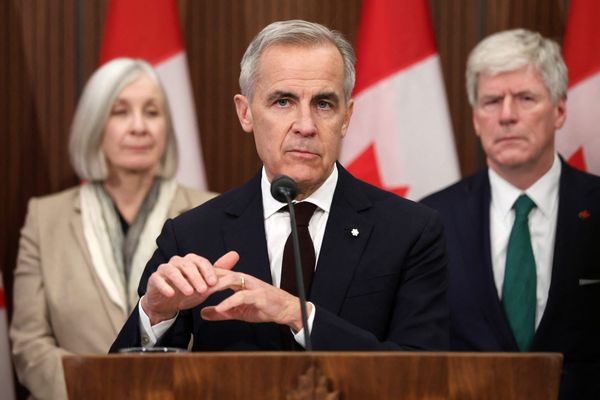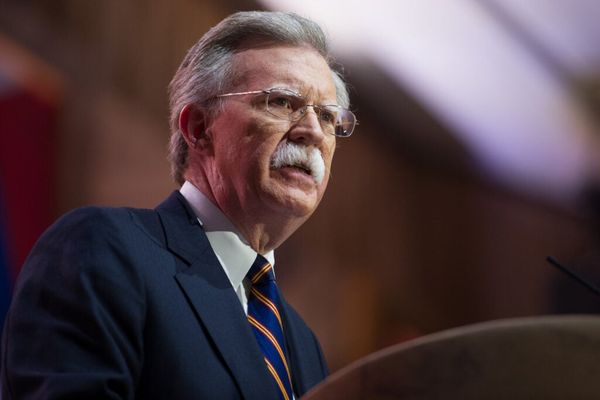
A New South Wales Labor plan to boost housing density in Sydney’s wealthy eastern suburbs after completing a train station half-built in the 1970s has been criticised by locals worried about the area’s “beauty” being impacted – and planning experts who argue it won’t combat the city’s affordability crisis.
Woollahra and Edgecliff boast tree-lined streets, grand manor homes and art deco apartment blocks just a stone’s throw from the CBD.
But residents are in for major change after the NSW premier, Chris Minns, announced the government would complete the long-abandoned Woollahra train station on the eastern suburbs line before rezoning the surrounding area to allow high-rise development.
The plan was expected to add up to 10,000 new homes over 15 years. The platforms weren’t completed in the 1970s when the line opened due to local community opposition.
Sign up: AU Breaking News email
Sarah Dixson, the Liberal mayor of Woollahra, said her inbox was already “flooded” with concerns. Announcing the station proposal on Sunday, Minns said the new Woollahra platforms would cost between $150m and $200m, far less than the $2bn needed for new metro stations. But Dixson was sceptical of that estimate and questioned whether the station would be built.
“We’re two years into the Labor government’s term and this is the first test of them actually building something,” she told Guardian Australia. “They’ve cut a lot of ribbons.”
Giles Edmonds, the president of the Queen Street & West Woollahra Association, an advocacy group for residents and businesses, said locals were worried about the plan. Under the rezoning, buildings up to 21 stories would be allowed within 800 metres of Woollahra station and 400 metres of Edgecliff station.
He said while the association wasn’t opposed to a new station, he questioned why it was needed, given Edgecliff and Bondi Junction stations were relatively nearby.
“I don’t quite know why it’s needed other than they wanted the zoning uplift,” Edmonds said on Monday.
He added the association would advocate for much of the new housing to be affordable, noting plans to build market-price apartments wouldn’t help those already struggling to buy in an area where a three-bedroom unit could cost more than $2.7m.
Minns said on Sunday that about 10% of the new housing would be affordable. But the details were yet to be finalised.
“The idea that somehow building expensive apartments for the wealthy in Woollahra is going to create some trickle-down effects in the western suburbs and reduce prices there, it doesn’t make much sense,” Edmonds said.
The plan has already sparked community pushback. Some locals worry existing infrastructure, including schools, won’t be able to cope with an influx of new residents.
The seven public schools near Woollahra and Edgecliff were seeing student numbers decline, the government said. On average, they were at 72% capacity. Woollahra public school was scheduled to have a demountable removed from its grounds due to a lack of students.
Minns told reporters on Sunday that “every single school” in the area was under capacity. But Edmonds argued Woollahra public school was “bursting at the seams”.
“I don’t really know where that statement came from. Maybe the sewage system and water system can handle it – but certainly not Woollahra public school,” he said.
Melissa Neighbour, the deputy chair of the housing advocacy group Sydney Yimby, noted the government’s plan would take more than a decade to realise. That timeline would allow more than enough community consultation, the pro-development campaigner said.
“There’s plenty of time to plan this well and engage the community and bring them on the journey and ensure we’re building complete communities, not just building homes,” Neighbour said.
“The swiftness of the action is absolutely warranted in a crisis this severe. We commend that swift action. There is still lots of time to really engage with the community. Of course, there are going to be upgrades needed.”
Laurence Troy, an associate professor of urbanism at the University of Sydney, said concerns over the plan reflected the relatively new effort in Sydney to add more housing to places where people already lived.
A lot of previous major development had taken place in industrial or repurposed commercial areas.
“The important thing to recognise here, is that in this area, there are people living in it already,” Troy said on Tuesday.
“Just saying we’re going to put more housing in and therefore the community benefits, that is not necessarily the case. If this just becomes a very high-end market development, which it almost certainly would be under the current proposal … this is not going to do anything for [affordability].
“There needs to be proper thought into who benefits from this kind of change.”
Troy argued that concern from Liberals was a case of the “shoe’s on the other foot now”. Previous Coalition governments had built unpopular projects like WestConnex in traditional Labor and Green seats, he said.
“Perhaps [Labor] may be able to get away with it politically because they’re doing it in a blue-ribbon seat, so the potential for that kind of electoral backlash is far diminished because they’ll probably never expect to win that area in parliament anyway.”
Neighbour said criticism focused on new homes in Woollahra and Edgecliff being expensive ignored the fact that any new dwellings would help boost the overall supply.
“There is the criticism, this will be high-end luxury homes,” she said. “We find that a bit of a Nimby cry. We actually need all types of housing.”
Neighbour cited research that suggested the creation of luxury units could help prices fall elsewhere.
A 2024 report into housing supply challenges urged the NSW government to relax planning controls in areas where development was most feasible – notably the eastern and northern suburbs close to the CBD.
The report found that more infill would lead to a fall in home prices on the urban fringe, “reducing the incentive to hoard or speculate” in outlying areas.
James Allison, a retiree who lives in the area, was standing outside the future station in Woollahra on Monday afternoon. He said he wandered up to the site to see what the government was planning.
“How are they going to fit 10,000 people?” Allison said. “I looked up the plan view and I’m thinking you’re going to have to have very high apartments to house that many and that’s going to rile all these little manor houses here.”
As he spoke, a man in a builder’s van drove past, yelling: “You can build 10,000 homes there apparently. It’s controversial!”
A spokesperson for Minns said there were no government plans to build above the station at present.
Kellie Sloane, the NSW Liberal MP for Vaucluse, said she was not opposed to a new station “in principle” and supported new housing development. But she said she had “grave concerns” about the lack of community consultation so far and Minns’ assertion that the plan “can’t be stopped”.
Adding “10,000 homes around Woollahra and Edgecliff would be tripling the population size,” Sloane said. “Those numbers are fanciful. The math has not been done on that project.”
Sloane added she had not received a phone call from the premier’s office. It was “pretty offensive to the community that the local member has been left out of briefings,” she said.
2/4
— Kellie Sloane MP - Member for Vaucluse (@kelliesloane) August 24, 2025
The ambition of 10,000 new homes seems fanciful. That’s the equivalent of around 95 new 21 storey towers. This in a suburb that already has 80% medium to high density.
“A lot of people will be offended by the lack of planning, the lack of consultation. They’ve started at the end game rather than done the work to make sure that this would be a success.”
Minns maintained the project had been under consideration for 50 years after Woollahra station was scuttled in the 1970s. He said it was time to move forward as Sydney grew and the government worked to address the housing crisis. “This idea has been consulted for 50 years, and the time to make a decision is now,” the Labor leader said on Sunday.
During a budget estimates hearing on Monday, the NSW planning minister, Paul Scully, couldn’t say when work began on the Woollahra rezoning plan. But, he said, governments had been looking at the area for development “over the last 50 years”.
Scully said the 10,000 figure was modelled on “a range of options” and emphasised the target was for “up to 10,000” homes to be built.
“We’re confident that there are several thousand … homes available in those areas,” the minister said.
Sloane said there was more to Woollahra than its closeness to the CBD.
“It’s not just proximity to the city that makes this area incredible. It’s the character, it’s the leafy streets,” she said. “Its beauty … is worth protecting.”
Minns said on Sunday that while his Labor government would consult with the community, the state planned to forge ahead with the plan no matter what.
“So we’re going ahead with this. We’re committing the funds, we’re building the station, we’re going to lead a state-led rezoning.
“Of course, we’ll speak to the local community, but it can’t be stopped. It’s too important for Sydney for us to push it down the road.”
Scully was also quizzed on other “plan B” options on Monday.
Although a Rosehill metro station has now been ruled out, the planning minister said he expected a draft rezoning plan for more density in pockets of the suburb and neighbouring Camellia would be ready by the end of the year.
A plan for increased density around the metro station at Cherrybrook in Sydney’s northern hills would be made public next month, Scully said.
The minister did not rule out changes to allow increased density at Glebe Island and the Bays precinct.
- Additional reporting Penry Buckley







